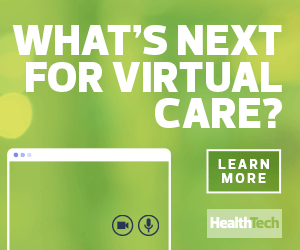Training Approaches Should Change Along with Care Delivery
Simply not acknowledging that care delivery has changed can often be a major setback to properly preparing clinicians for virtual care delivery, said Tibbels.
“The behavioral dynamics have changed,” said Tibbels. “It’s different, and we shouldn’t act like it’s the same.”
Tibbels said that, while he’s seen some physicians struggle initially with telehealth delivery, it’s something that can absolutely be learned. The key: a robust infrastructure of education, coaching, outreach and good clinical guidance and feedback. Together, these things make it easier for clinicians to offer a consistent, high-quality experience for patients, he said.
Dr. Judd Hollander of Thomas Jefferson University echoed Tibbels’ call for proper education surrounding telehealth, noting that the solution’s success relies less on the technology than on the operations and workflows that make it work.
“We need to not expect telemedicine in a video visit to solve all the problems,” said Hollander, the associate dean for strategic health initiatives at Jefferson’s Sidney Kimmel Medical College. “We need to expect telemedicine — just like an ER visit, just like an office visit — to get you appropriately to the next accurate step.”
#Healthcare leaders: What's driving #telehealth adoption within your organization?
— HealthTech Magazine (@HealthTechMag) June 3, 2020
At Thomas Jefferson University Hospitals, Hollander said, advanced practice providers working in remote locations have been trained to successfully see patients seeking care at multiple hospital locations at the same time. The virtual solution, he noted, has made a lasting, positive impact on their patients.
“It reduces our door-to-doc time from something that’s way longer in an ER waiting room to an average of less than 10 minutes, including being seen and evaluated by a provider and having your tests started,” said Hollander.
Training Modules Must Be Designed for Clinical Staff
In the months leading up to the onset of the coronavirus pandemic, Thomas Jefferson University Hospitals were scheduling roughly 125 telehealth visits each month. When many providers were forced without preparation to adopt telehealth in March, Hollander mentioned that Jefferson was already prepared — and able to rapidly scale to over 6,000 virtual visits in that same month.
“The reason we were able to scale up during COVID is because we developed online training modules,” said Hollander. “In our video portal … we have video modules that are necessary for people to complete before they do telehealth, so that they can learn the basics of telehealth as well as the legal and regulatory requirements.”
And while virtual care training is certainly necessary for today’s clinical staff, academic institutions like Binghamton University understand the importance of educating tomorrow’s clinicians on this newer model of care delivery.
“We know there is a strong need to prepare nurses and nurse practitioners in telehealth technology and for virtual care,” said Fronczek.
Fronczek mentioned that preparation is well underway at Binghamton for training the next generation of nurses and nurse practitioners for virtual care. The academic institution has introduced its first telehealth course for students with the goal of preparing the workforce for where care is heading.
“What really helped me in developing some of our content is that the National Organization of Nurse Practitioner Faculties finally made a statement that they thought it was really important for APRNs going out into practice, that they have telehealth competency,” said Fronczek. “It’s been an uphill challenge, but we’re there.”
Keep this page bookmarked for articles from the event. Follow us on Twitter @HealthTechMag as well as the official organization account, @AmericanTelemed, and join the conversation using the hashtags #ATA2020 and #GoTelehealth.











